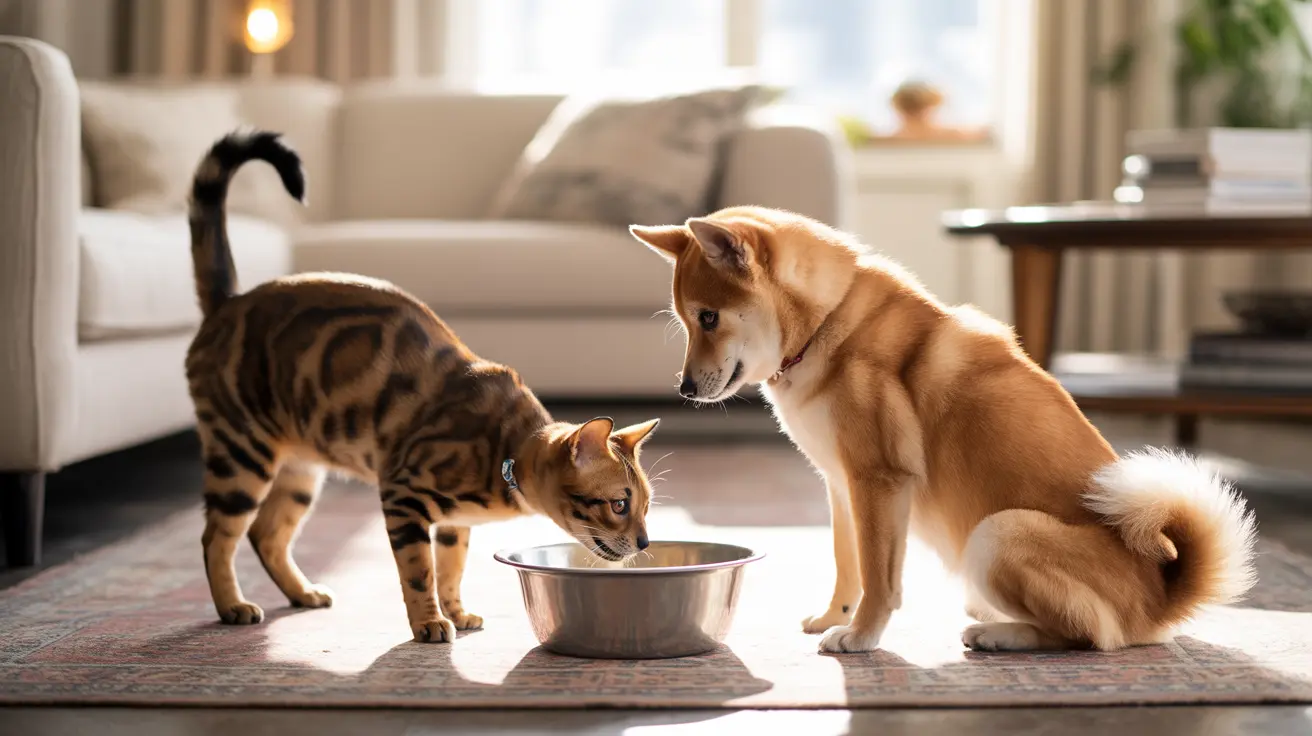Safety Considerations for Shared Water Bowls
Generally, healthy cats and dogs can safely drink from the same water bowl without significant health risks. However, certain situations require more caution:
When one pet is sick or immunocompromised, sharing water bowls can increase the risk of disease transmission. Common conditions that can spread through shared water include giardia, kennel cough, and various viral infections.
Regular cleaning and maintenance are essential when pets share water bowls. Daily cleaning with warm, soapy water helps prevent bacteria buildup and ensures both pets have access to fresh, clean water.
Behavioral Dynamics and Pet Preferences
Not all pets are comfortable sharing water sources. Some common behavioral considerations include:
- Territorial behavior around water bowls
- Anxiety in more timid pets
- Individual cleanliness preferences
- Resource guarding tendencies
Cats, in particular, can be quite particular about their water sources. Some may avoid drinking if they detect dog saliva or food particles in the water, potentially leading to decreased water intake.
Best Practices for Multi-Pet Households
To ensure optimal hydration for both cats and dogs, consider these practical tips:
Multiple Water Stations
Provide several water bowls throughout your home. This reduces competition and ensures easy access to fresh water for all pets. Place bowls in quiet, low-traffic areas where pets feel secure while drinking.
Proper Bowl Selection
Choose wide, shallow bowls made of stainless steel or ceramic materials. These materials are easier to clean and less likely to harbor bacteria compared to plastic alternatives.
Regular Maintenance
Establish a daily cleaning routine for all water bowls, regardless of whether they're shared or separate. Replace water at least once daily, and wash bowls thoroughly to prevent biofilm development.
Signs That Separate Water Bowls May Be Needed
Watch for these indicators that your pets might benefit from separate water bowls:
- Decreased water consumption in either pet
- Signs of dehydration (lethargy, dry gums, sunken eyes)
- Aggressive behavior around water bowls
- One pet consistently preventing the other from drinking
Frequently Asked Questions
Is it safe for my healthy cat and dog to share the same water bowl?
Yes, healthy cats and dogs can safely share water bowls as long as the bowl is kept clean and both pets are comfortable with the arrangement. Regular cleaning and monitoring of pet behavior are essential.
What health risks should I be aware of if my sick cat or dog drinks from a shared water bowl?
Sick pets can transmit various illnesses through shared water, including giardia, kennel cough, and respiratory infections. It's best to provide separate water bowls until the sick pet has fully recovered.
How can I clean and sanitize pet water bowls properly to prevent disease transmission?
Clean water bowls daily with warm, soapy water, rinse thoroughly, and dry completely. Consider using pet-safe disinfectants periodically for deeper cleaning.
Why might my cat refuse to drink from a water bowl that my dog also uses?
Cats are typically more particular about cleanliness and may avoid water that contains dog saliva or debris. Some cats also feel intimidated sharing resources with dogs or prefer fresher water sources.
Should I provide separate water bowls for my cat and dog, and where should I place them to encourage drinking?
While not always necessary, providing separate water bowls can prevent potential conflicts and ensure both pets stay well-hydrated. Place bowls in quiet, accessible locations away from food dishes and litter boxes.
Remember, every household is unique, and what works for one pair of pets may not work for another. Observe your pets' behavior and adjust your water bowl strategy accordingly to ensure both cats and dogs maintain optimal hydration levels.






